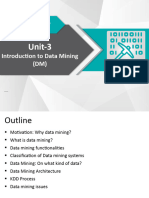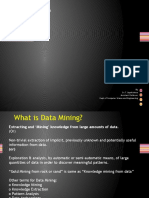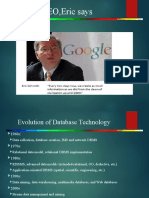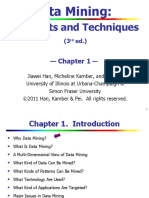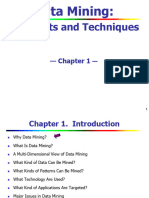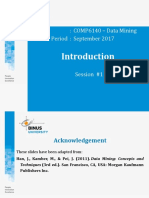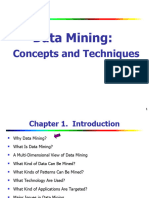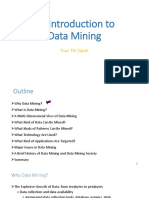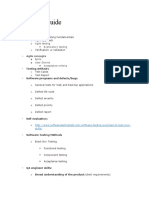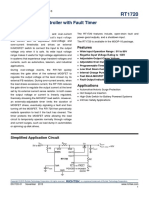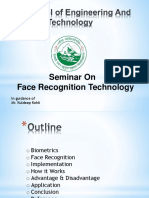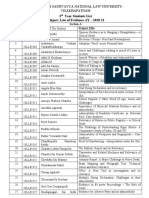0% found this document useful (0 votes)
23 views41 pagesData Mining Introduction
The document serves as an introduction to Data Mining, outlining its importance, methodologies, and applications. It covers the course structure, evaluation criteria, class rules, and recommended texts for students. Additionally, it discusses the evolution of database technology, the KDD process, and various functionalities of data mining such as classification, clustering, and outlier analysis.
Uploaded by
Obaid AmirCopyright
© © All Rights Reserved
We take content rights seriously. If you suspect this is your content, claim it here.
Available Formats
Download as PPTX, PDF, TXT or read online on Scribd
0% found this document useful (0 votes)
23 views41 pagesData Mining Introduction
The document serves as an introduction to Data Mining, outlining its importance, methodologies, and applications. It covers the course structure, evaluation criteria, class rules, and recommended texts for students. Additionally, it discusses the evolution of database technology, the KDD process, and various functionalities of data mining such as classification, clustering, and outlier analysis.
Uploaded by
Obaid AmirCopyright
© © All Rights Reserved
We take content rights seriously. If you suspect this is your content, claim it here.
Available Formats
Download as PPTX, PDF, TXT or read online on Scribd
/ 41

